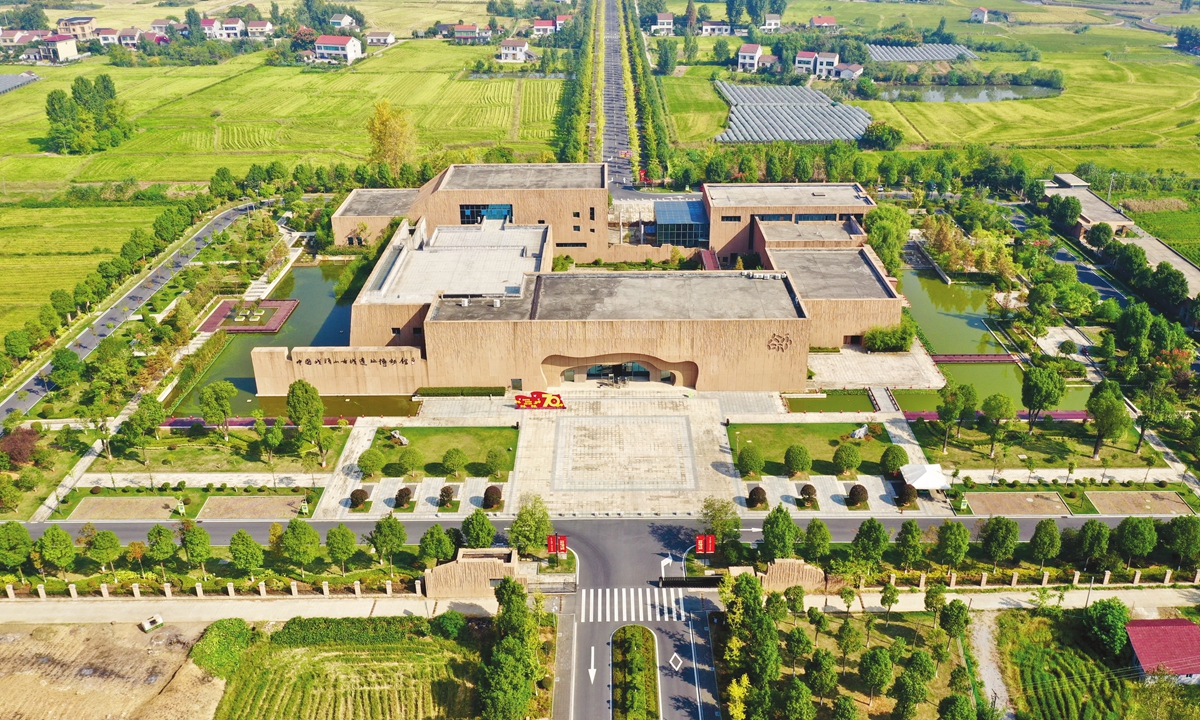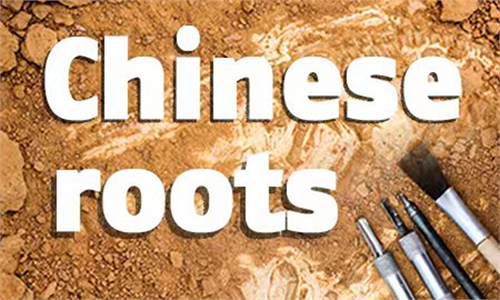ARTS / CULTURE & LEISURE
Chinese roots

A bird's-eye view of the Chengtoushan Ruins Photo: IC
Chengtoushan Ruins: China's earliest prehistoric city and window into the pastDiscovered in Central China's Hunan Province in 1979, the Chengtoushan Ruins are known as "China's earliest established city" academically as archaeologists believe the ruins date back to 4,200 to 6,500 years ago.
Viewing the ruins from above, one can see that the city is a round circle with one side next to a river. This location is seen by experts as a greatly benefiting the maturation of paddy rice cultivation.
Conducted by the University of Hong Kong, the paddy rice fields are the earliest and best-preserved fields ever discovered in the world to date.
Over 6,000 years ago, the ancestors to the Chinese people made the land their home and developed farming and pottery-making industries.
Architectural relics unearthed at the site include large living areas, pottery-making areas, tombs and sacrificial places, as well as the traces of the rice fields at the base of the city walls.
With three gates at the east, south, and north walls, the city sections include well-planned houses, a sacrifice pit and a large altar.
In the winter of 1998, a large altar dating back to 5,800 to 6,000 years ago was uncovered from a deep layer of earth. The altar was an irregular oval shape with a raised center.
Archaeologists found many human bones scattered on the sacrificial altar, and animal bones, human bones, rice grains and pottery wares buried in 40 sacrificial pits, offering precious insight into the religion of ancient people and their society thousands of years ago.
Among the 553 unearthed tombs, the tomb of a "leader" attracted archaeologists' attention as its occupant had exquisite jade ornaments around his neck and the tomb itself contained a massive amount of pottery wares as well as the bones of women that were most likely the tomb owner's concubines.
How many people actually lived in this city? The Hunan Provincial Institute of Cultural Relics and Archaeology made estimates based on the distribution of tombs, the size of the buildings and the amount of domestic waste present.
"There were around 3,000 to 5,000 people in total," noted Guo Weimin, director of the institute.
"The Chengtoushan Ruins are a mirror through which we can investigate the development and demise of civilizations along the middle reaches of the Yangtze River as well as prehistoric cities throughout the rest of southern China," added Guo.
Global Times

